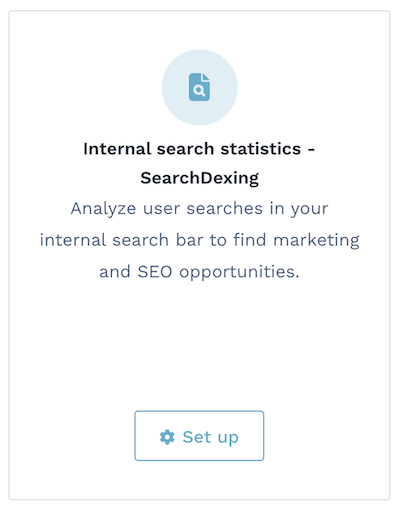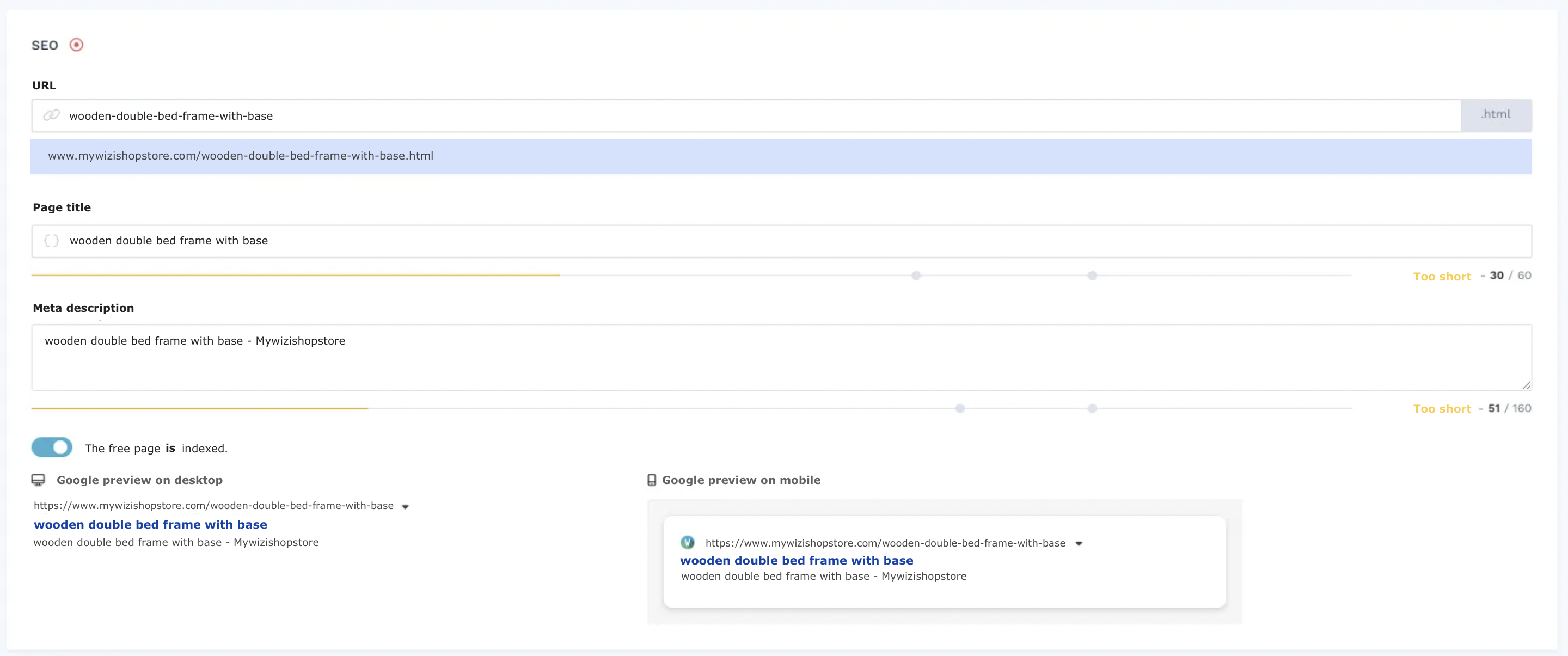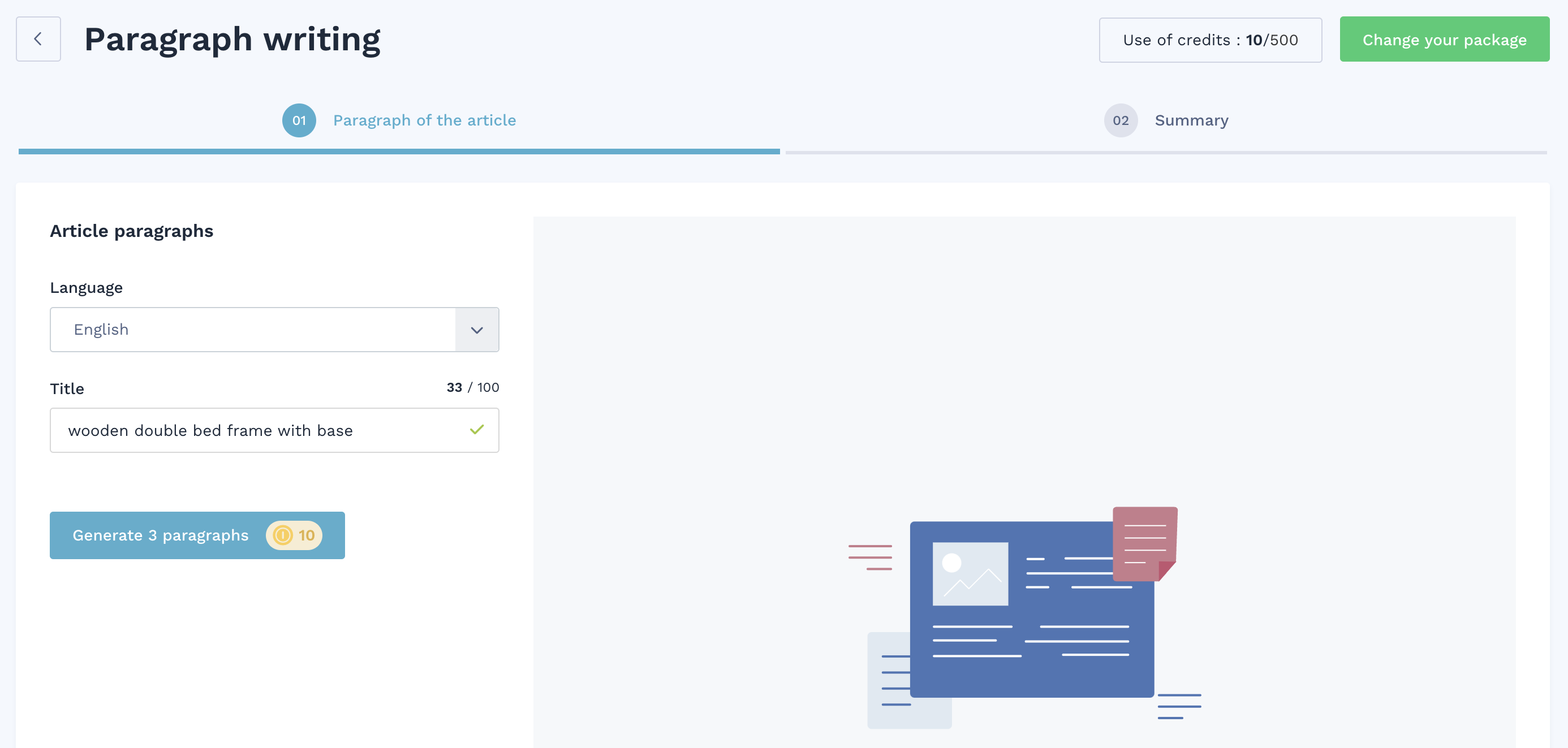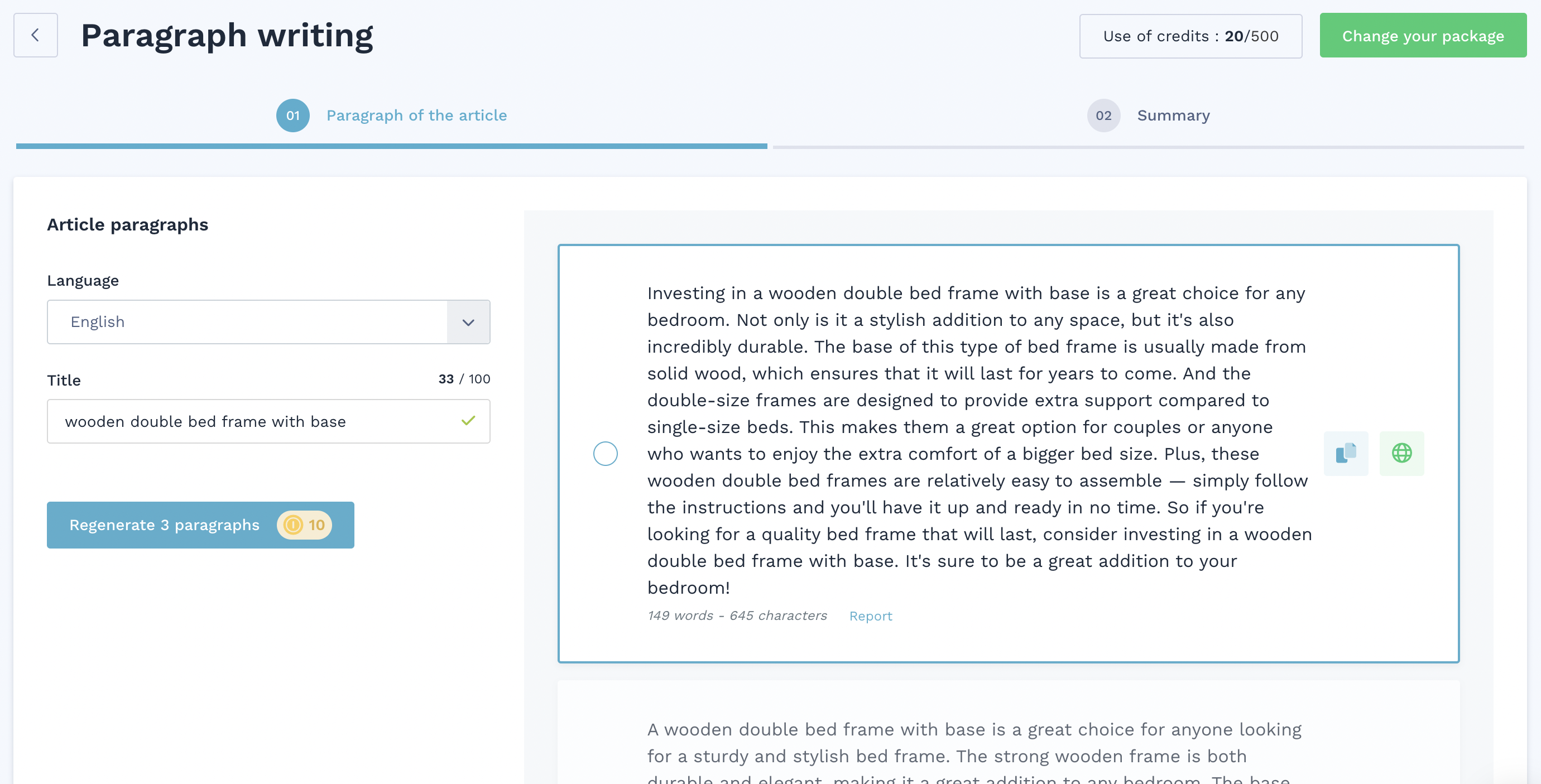In SEO, the basic strategy is to analyze the different searches of your target customer in search engines like Google to define the different keywords to target and the different pages to create.
What if I told you that you could go even further by directly analyzing the searches done on your site to gather even more relevant information for SEO and conversions?
This strategy is popularized under the name of searchdexing. In this article, I define this term, present you with the steps to implement this SEO technique, and share the WiziShop feature with you.
Searchdexing: Definition and prejudices
Searchdexing is an SEO strategy that consists of creating and indexing pages based on internal searches performed by internet users on your site.
The information and terms typed by the users on your site are real opportunities for your business!
Generally used on media sites and ecommerce sites, searchdexing allows you to rank for more keywords and attract more qualified traffic.
For example, on an online bedding store, users can type expressions like "wooden double bed frame without base" or "double bed with storage without headboard." These are long-tail keywords that you may not have targeted but that are nevertheless typed in your search and especially... on Google!
Little talked about in SEO, this technique is often criticized because it can lead to certain SEO problems: duplication of existing pages, massive creation of low-quality pages, poor management of the crawl budget, generation of pages for "sensitive" or unsuitable keywords, potential loopholes for ill-intentioned competitors, etc.
The reality is that these problems happen when everything is managed automatically and without supervision.
The majority of sites that encounter these problems will generate and index hundreds of thousands of pages automatically based on just a few criteria.
As with any SEO strategy, the most important thing is to do it right. Searchdexing can only cause problems for your SEO if you don't take precautions when implementing it.
Applied correctly, it can dramatically increase your number of positioned keywords, your traffic, and your sales. For some sites, searchdexing is even the most important part of their traffic!
Example: Rakuten
Searchdexing is used by the biggest players in ecommerce.
For example, in France, popular sites like ManoMano, Cdiscount, Conforama, Fnac, or Rakuten use this practice. To illustrate this SEO strategy, I’ll share the example of Rakuten with you.
As soon as you navigate in categories or type keywords in the internal search bar of the site, you’ll often find, at the bottom of the page, the "You may also like" block.
Each search listed links to a standard category page or a page generated via the searchdexing technique. To recognize them, the searchdexing URLs contain the "/s/" (for "search"). These are the ones at the end of the list.
In terms of SEO positioning, if we filter only the results pages indexed with the "/s/" pattern in the URL on the Semrush tool, here are the results:

These pages allow Rakuten to rank on almost 3 million keywords, including more than 54,000 in the Top 3.
And here are the site's numbers if we remove the searchdexing URLs:

The keywords positioned and the traffic coming from searchdexing are almost 3X more significant than the standard pages of the site. This means that Rakuten doesn’t really moderate its strategy with searchdexing!
The traffic generated is considerable, but if we take a closer look at the keywords positioned on the site, it’s very likely that this site has some problems with cannibalization and relevance to the pages created.
This example may need some improvements but the objective was simply to demonstrate the enormous potential of searchdexing for your SEO strategy.
So how do you effectively implement this strategy by applying the right methodology?
Steps to implement the searchdexing technique
1. Have an internal search engine and a high-traffic site
It’s through your site’s internal search bar that your users type the keywords that you’ll retrieve.

The very first step to implement a searchdexing strategy on your site is to have an internal search engine and to have the ability to retrieve the related data.
Then, not all sites are eligible for the implementation of searchdexing. It’s an SEO practice that mainly concerns ecommerce or media sites with a high volume of traffic.
If few people visit your site, the data collected will be too weak to be exploited.
On the other hand, nothing prevents you from regularly consulting the data of your internal search engine. The information remains very interesting to analyze and exploit.
2. Recover and filter data related to internal search
Once the extraction of your data is done, the work will consist of recovering the top keywords. This work will take some time, but it’s necessary to discover relevant expressions.
Your missions will include the following:
- Remove the keywords that don’t display any results or very few (one or two products for example)
You have no interest in spending time creating pages on products that you don’t sell. On the other hand, the information shouldn’t be totally ignored! If a lot of people are interested in a type of product on your site, it’s perhaps an opportunity to expand your catalog.
- Remove the keywords on which you already have pages positioned
During your analysis, you’ll come across many keywords that people are looking for on your site and that concern pages that you already have. For this reason, you must remove them to avoid competing with your existing pages.
- Remove inappropriate keywords
Some searches on your site will surprise you... All keywords that are inappropriate should be banned from your listing, as well as those with syntax errors.
- Pull out the top keywords and prioritize!
At this stage, your listing is already purified. The final sorting consists of grouping similar keywords and ranking the most searched keywords on your site. You can couple this analysis with the search volume on search engines. This data will allow you to prioritize the pages to be created.
3. Create the pages
Now that your listing is ready and you know which pages to create on your site, you’ll have to apply some good SEO practices to maximize your chances of ranking.
To create a relevant page, you must complete these actions:
- Optimize the important tags: title, meta description, and H1
- Add a paragraph of SEO content to contextualize the page (preferably at the top)
- Create a URL with a specific pattern to better analyze and monitor the results of your searchdexing strategy: "https://www.mywizishopstore.com/sd-keyword" ("sd" means searchdexing)
- Add the page in your sitemap file to facilitate the exploration
- Add a canonical tag
I advise you to stay very standard on the design of these pages. They should look as much as possible like your category pages.
4. Work on the internal linking
By default, these pages aren’t attached to the structure of your site. To avoid making them orphans and bring them power, you must add internal links with optimized anchors.
The most important thing when working on internal linking is to maintain a certain semantic proximity.
To take the example given above for the term "wooden double bed frame without base," I can add links from categories such as "bed frame," "bed frame without base," or "wooden bed frame." It’ll depend on the pages you have.
Find our complete guide on internal linking.
5. Analyze the results
I advise you to implement this strategy gradually. The idea is to start with a dozen or so pages to track the indexation and ranking via tools like Google Search Console as well as the business results.
If this strategy works, then you can accelerate the development and continue to create new pages regularly.
Most large sites automate the above steps, which can save a lot of time, but it's important to do it correctly to avoid SEO issues.
WiziShop feature
I now come to our ecommerce solution WiziShop’s feature that allows you to launch your searchdexing SEO strategy.
As a reminder, we’re a SaaS solution whose mission is to offer you the best SEO in the world for your ecommerce site.
That's why we offer more than 50 native optimizations and regularly develop advanced features for the SEO of our e-merchants, at no extra cost.
As of now, searchdexing is one of them!
We decided to create an easy-to-manage feature requiring manual intervention to prevent our e-merchants’ SEO problems (low-quality pages, duplicate content, etc.).
Try WiziShop free for 7 days
THE EASIEST NO-CODE ECOMMERCE SOLUTION✅ No credit card required
✅ Access to all features
✅ No commitment
Directly in your SEO dashboard, you can find the "Internal search statistics - SearchDexing" feature.

This section dedicated to internal search, present on your ecommerce site, allows you to analyze the behavior of your visitors and study their searches.
Several columns are displayed:
- Terms: Keyword typed by the user
- Search No: Number of times this keyword was typed in the internal search bar
- Results No: Number of products that the search engine proposes
- First time: Date of the first search for the keyword
- Last time: Date of the last search for the keyword
- Redirection: Possibility to configure a redirection to redirect the visitor to another page when searching for the keyword
These different types of data allow you to easily identify the most advantageous keywords to work on for your business.
In the same tab, you can then click on the "+" icon.

This icon sends you directly to the page editor. We automatically take the targeted keyword and fill in several fields in the page's SEO configuration: H1, title, URL, etc.

I recommend that you manually edit the important tags to optimize them as much as possible.
Then you can use our artificial intelligence software to automatically generate the content of your searchdexing page.
Within our ecommerce solution, we offer you the "Paragraph writing" tool. It’s perfectly adapted to create the content of your page in a few seconds.
You simply fill in the title:

In a few seconds, the tool provides you with several paragraphs:

All you have to do is to create the layout via our simplified drag-and-drop system, insert your content, add your products, and publish your page.
The page is automatically added to your sitemap file, but remember to integrate internal links within your site.
Searchdexing is an SEO strategy that may seem complex, but it’s actually quite easy to implement. Little used and yet so effective, it can significantly increase the number of keywords positioned on your site, generate qualified traffic, and ultimately allow you to generate more sales!










